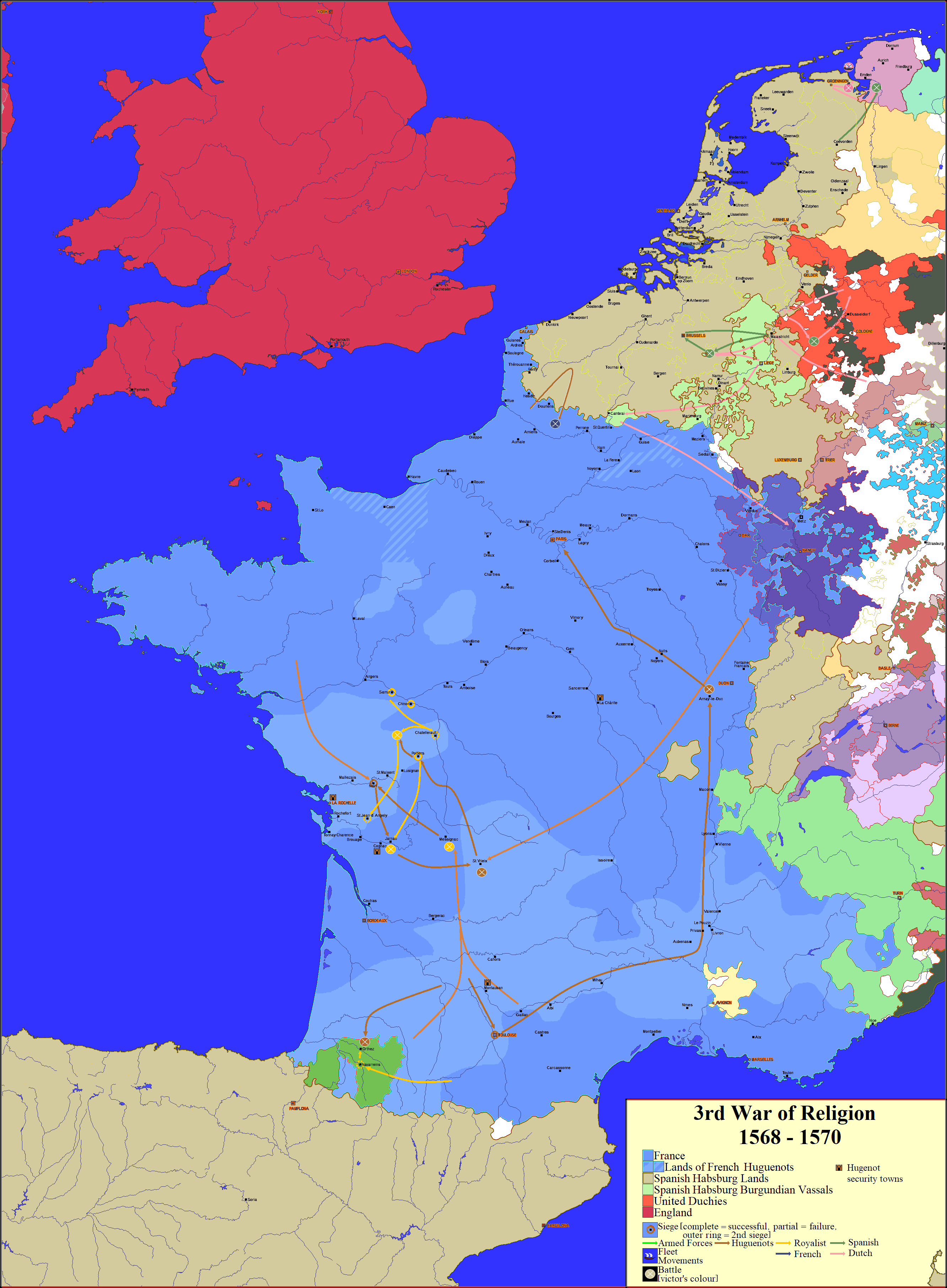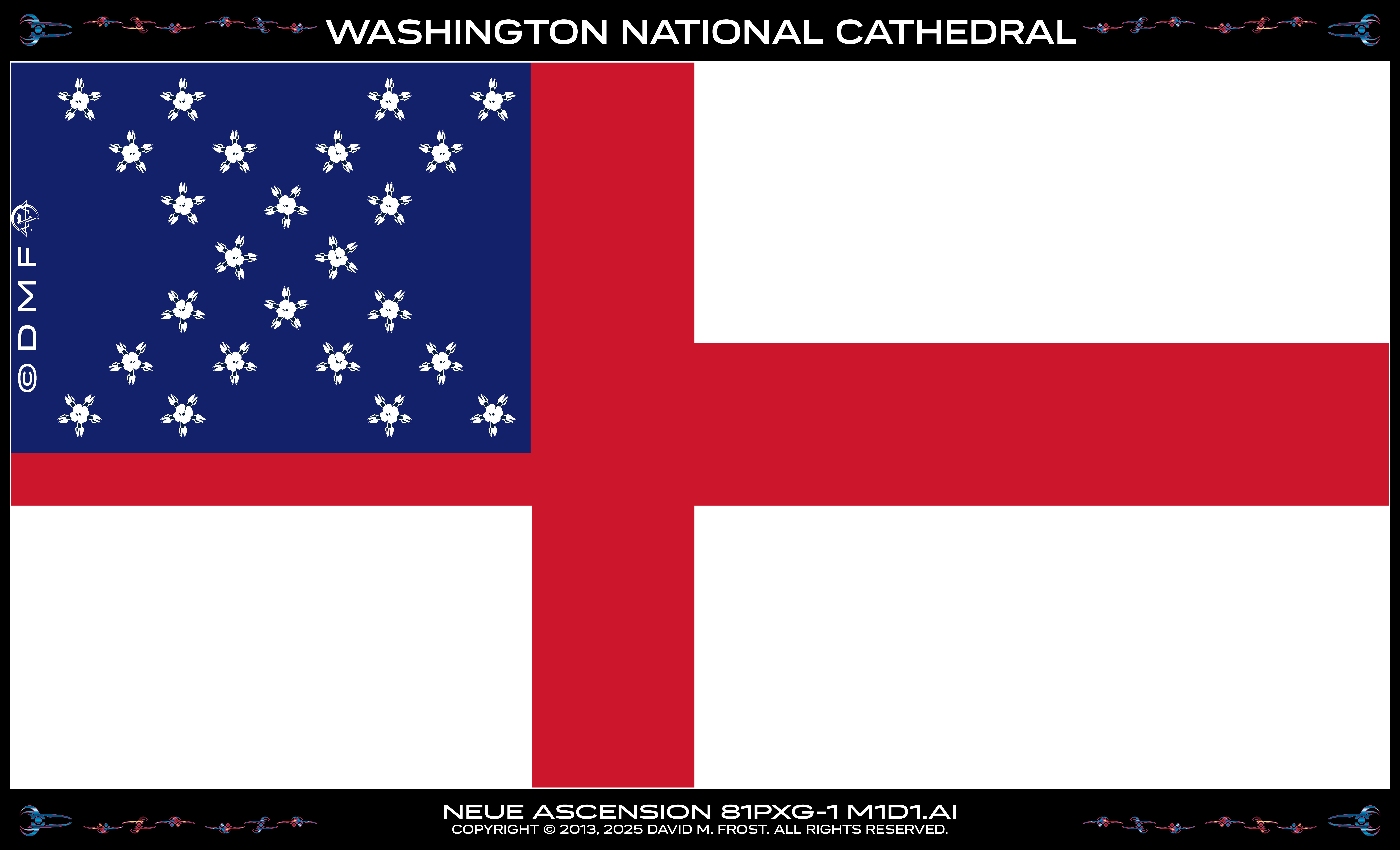HOME | DD
 BobHopeXIVRedux — WE1.1568-1570.Ce
BobHopeXIVRedux — WE1.1568-1570.Ce

Published: 2022-04-21 23:31:53 +0000 UTC; Views: 1106; Favourites: 4; Downloads: 5
Redirect to original
Description
The Third War of Religion- 1568-70
Catholic Leaders; Duke Anne de Montmorency- Constable of France, Charles of Guise- Cardinal of Lorraine, Gaspard de Tavannes, Henry of Anjou and Henry, Duke of Guise. Aided by Philip of Spain, the Pope and the Duke of Tuscany.
Protestant Leaders; Prince Louis de Condé, Admiral Gaspard de Coligny and Wolfgang- Duke of Zweibrucken. Aided by William the Silent, Prince of Orange and Elizabeth I of England who financed the expedition of Duke Wolfgang.
Although the Second War ended early in 1568, some Huguenot leaders, including Admiral Coligny, warned that the court was simply negotiating in order to save Chartres. There were factions at court who were just as opposed to the treaty. The Edict of Longjumeau was slow to come into force. Local Parliaments were reluctant to ratify the edict. Toulouse only acted after four official orders to do so from Charles. When Rouen ratified the Edict in April it triggered a riot.
While Huguenot armies disbanded with peace, most of the Royal forces were retained. Charles began to change the terms of the treaty, excluding Auvergne, Anjou, Alençon and any lands held by the Bourbon princes. Murders swept France, more Huguenots were killed during the peace than during the Second War.
Condé and Coligny, concerned for their safety moved to lands near Noyers in Burgundy. A plot to capture the Huguenot leaders saw a strong force sent to arrest Condé and Coligny. News reached Condé in time and he and Coligny left for the stronghold at La Rochelle, arriving in September.
Condé sent messages to other protestant leaders and they soon began to arrive at La Rochelle. The Queen of Navarre arrived with the young Henry of Navarre, as did Coligny's brother François d'Andelot, from Normandy after slipping past a Royal army. The combined, now strong enough to go onto the offensive, captured key cities in Poitou to make La Rochelle more secure. They were reinforced by an army from the south east of France that suffered a minor defeat on the way, at Mensignac in October.
In late September a new edict was issued banning Protestant worship, all ministers were to leave France within fifteen days, and all Protestants were stripped of any official office.
Condé had somewhere between 19,500 and 30,000 men, the Royal army, commanded by Henry of Anjou, was about the same size. Actual control of the Royal army was held by Gaspard de Tavannes. Inconclusive campaigning saw both sides withdraw to winter quarters, the Royal army at Samur, Chinon and Poitiers and the Huguenots further west at Partenay and Niort.
In spring 1569 Condé and Coligny left La Rochelle and moved south to join up with the Army of the Viscounts in the south. The Royal army, under Henry of Anjou and Gaspard de Tavannes also moved south. Catching the Huguenots unaware the two clashed at Jarnac in March 1569. Condé was killed in battle, but most of the Huguenot army escaped intact.
13,000 Huguenot reinforcements, led by Wolfgang, Duke of Zweibrucken came from Germany. A Royal army failed to block him and the Germans and Huguenots were met at St. Yrieix in June. Zweibrucken died of natural causes, Coligny took command of the combined army. Coligny won a minor victory at La Roche-Abeille then moved on to besiege Poitiers. The siege was a disaster for the Huguenots. The defenders included Henry, Duke of Guise, who began to earn a reputation for bravery. Coligny attempted an attack across a river but both it and an assault on an exposed suburb were defeated.
After La Roche-Abeille, Royal commanders decided to temporarily disband most of the army hoping the Huguenot army would wither away without a clear opponent. This did not happened, so Henry of Anjou regrouped it and moved to threaten Châtellerault. Coligny was forced to lift the siege of Poitiers having lost at least 2,000 men. As Coligny moved north, Anjou retreated to Chinon.
Their forces spent much of September separated by a short distance. Coligny would not risk a battle, but most of his army wanted to fight, as did Anjou. The Royal army moved, crossing the Vienne and heading south-west to cut the Huguenots off from their western bases. Coligny marched across the front of the Royal army, and reached Moncontour on the Dive. The Royal army marched around the southern end of the river and forced battle on the plains south-west of Moncontour. The Royal army, 7,000 Cavalry, 18,000 Infantry and 15 Guns, confronted the Huguenots, consisting of 6,000 Cavalry, 14,000 Infantry and 11 Guns. A combined Infantry-Cavalry attack routed the Huguenot Cavalry. The Infantry, now with no protection, were crushed. Huguenot losses were 8,000 whilst the Royalists lost only about 1,000. Henry of Anjou failed to take advantage of his success, instead moving to besiege Saint-Jean d'Angély. The siege lasted until December but the Royal army suffered heavy losses and Coligny had time to build a new army in the south.
In the south west, meanwhile, a Royal army had conquered most of the Kingdom of Navarre, aided by a pro-French revolt in Bearn. The Queen's lieutenant was forced to take refuge in Navarreins. The resulting siege lasted from April until August, only ending when a Huguenot army approached. Sent from Poitiers these troops joined up with the Army of the Viscounts, lifted the siege, and then defeated the Royalists at Orthez, restoring control over the south-west.
In early 1570, whilst the Huguenots had a strong position in the south-west, Coligny believed the only way to force the Court into peace talks was to advance north. He planned to move east along the Mediterranean coast, then advance up the Rhone. Toulouse resisted January to February but after this Coligny was more successful, defeating a Royal army at Arnay-le-Duc in June and threatening Paris.
After Arnay-le-Duc Charles IX wanted to make peace. The Peace of St. Germain was similar to previous treaties, it gave the right to worship in a limited number of locations but also gave them four 'security towns', La Rochelle, Cognac, La Charité-sur-Loire and Montauban, which were to be held for two years. The peace indicated a political turn-about at court, the moderates recovering their influence while that of the Guise decreased.
Dutch Revolt 1567-1571
In March 1567, in the Battle of Oosterweel, the Calvinists were defeated and rebels executed. In April, Margaret reported that order had been restored, however, by the time this reached Philip in Madrid the Duke of Alba had already been dispatched with an army to restore order. Alba took over command and Margaret resigned in protest.
Alba established the Council of Troubles (known as the Blood Council) repressing suspected heretics and those guilty of insurrection. High-ranking officials were arrested on various pretexts, among them the Counts of Egmont and Horne who were held responsible for the Calvinist iconoclast riots or “Beeldenstorm”. The Beeldenstorm was when churches and other religious buildings were stormed, desecrating them and destroying church art and decoration, over most of the country during 1566. The Counts of Hoorn and Egmont were executed in 1568. Of the 9,000 accused, about 1,000 were executed but many fled into exile, including William of Orange (William the Silent), who moved to Dillenburg, in Nassau.
Dillenburg was the center for plans to invade the Netherlands. Louis of Nassau, William's brother, entered Groningen from East Friesland, defeating a royalist force at Heiligerlee in May 1568 but, Alba moved north, luring Louis into attacking his larger force. The Dutch rebels were smashed in the Battle of Jemmingen.
At sea the Sea Beggars defeated a royalist fleet in battle on the Ems. However, a Huguenot army invading Artois was pushed back into France and annihilated by the forces of Charles IX of France in June. Orange marched into Brabant with 25,000 men, but Alva, with 16,000, outmaneuvered him and destroyed his rearguard in a skirmish in October. With money running out and few Netherlanders joining him, William could not maintain his mercenary army and had to retreat.
Philip found it difficult to finance this and the war against the Ottoman Empire, and so ordered Alba to fund his armies from taxes levied in the Netherlands. Alba imposed sales taxes by decree in July 1571 which alienated even loyal local governments from the central government.

























